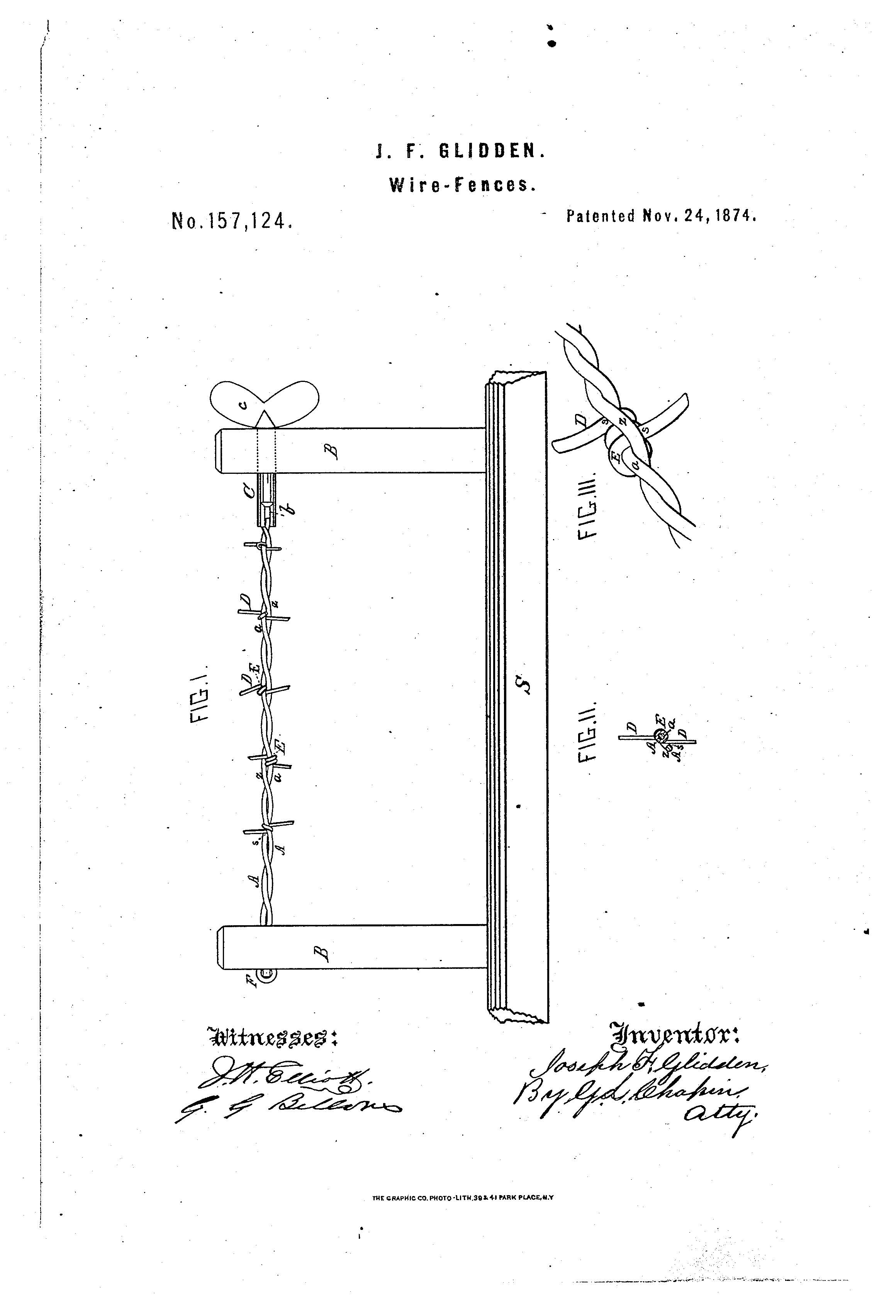On this day in 1874 the patent for Wire Fences was granted. U.S. Patent No. 157,124.
Wire Fences was invented by Joseph F. Glidden, of De Kalb, Illinois. This patent application was granted on November 24, 1874 as U.S. Patent No. 157,124.
Mr. Glidden’s invention, which we now know today as barbed wire fence, has relation to means for preventing cattle from breaking through wire fences; and it consists in combining, with the twisted fence-wires, a short transverse wire, coiled or bent at its central portion about one of the wire strands of the twist, with its free ends up projecting in opposite directions, the other wire strand serving to bind the spur-wire firmly to its place, and in position, with its spur ends perpendicular to the direction of the fence-wire, lateral movements, as we all vibrations, being prevented.
This invention is rumored to have come about because Joseph’s wife Lucinda wanted him to enclose her garden to keep animals out so he began to experiment with the fence by adding barbs to it.
Apparently this invention brought on quite the legal battle between Joseph Glidden and Jacob Haish. Haish, who titled himself the inventor of the barbed wire fence, had patented his own version of the fence but had not been doing much with it by means of promoting or selling it. Since Glidden was originally denied his patent Haish swooped in and quickly filed his patent for “S-Barb” in July of 1874, he also filed interference papers which caused even more of a battle. When all was said and done Haish was awarded his patent first but Glidden won the argument because he had filed his patent before Haish.
We still see barbed wire fencing used today for farming and security purposes in jails, prisons, military bases, the list goes on. Of all these places Glidden’s style of fencing is still the most familiar style of barbed wire fence used today.
http://www.rushcounty.org/barbedwiremuseum/bwhistory.htm

